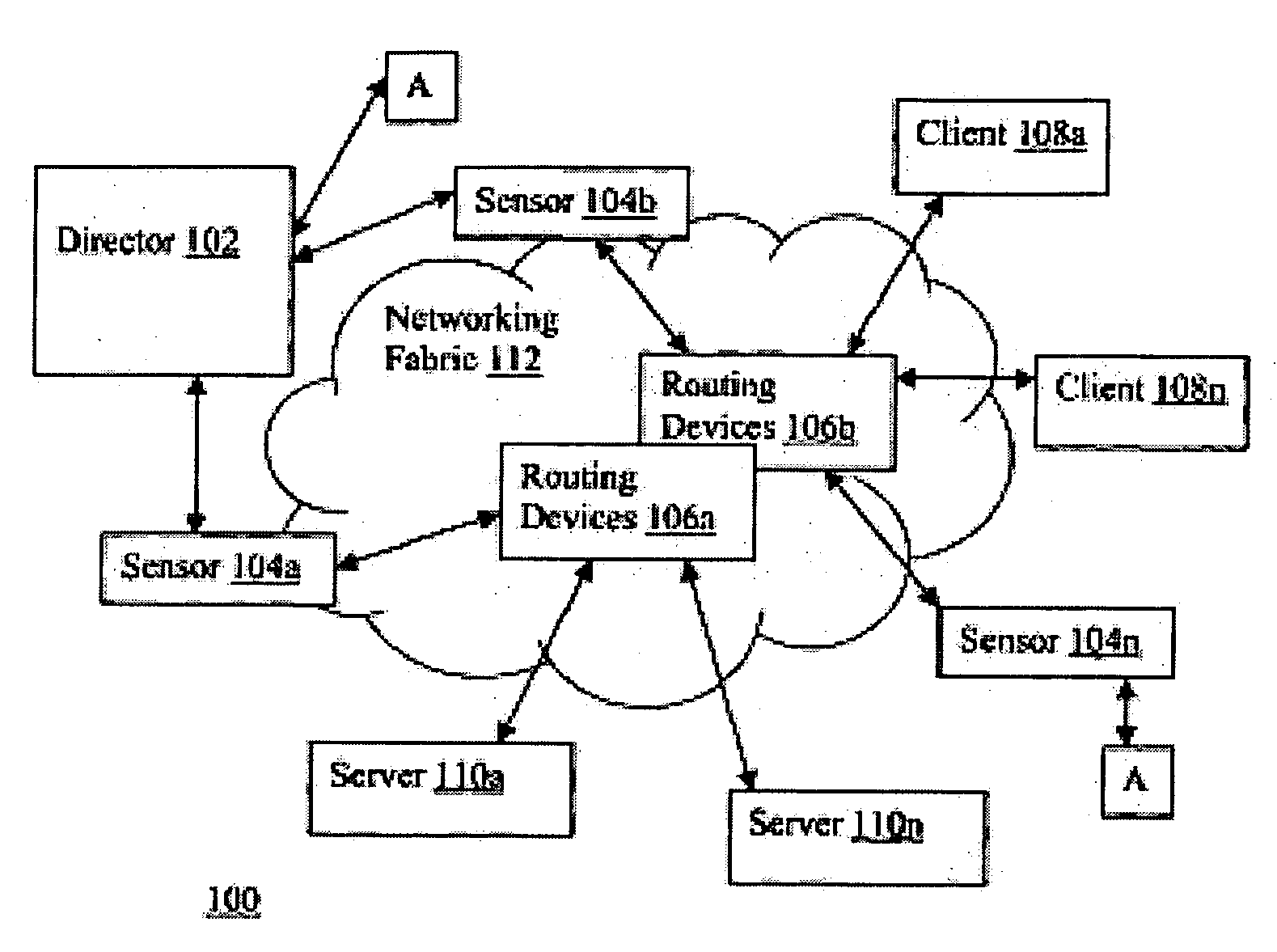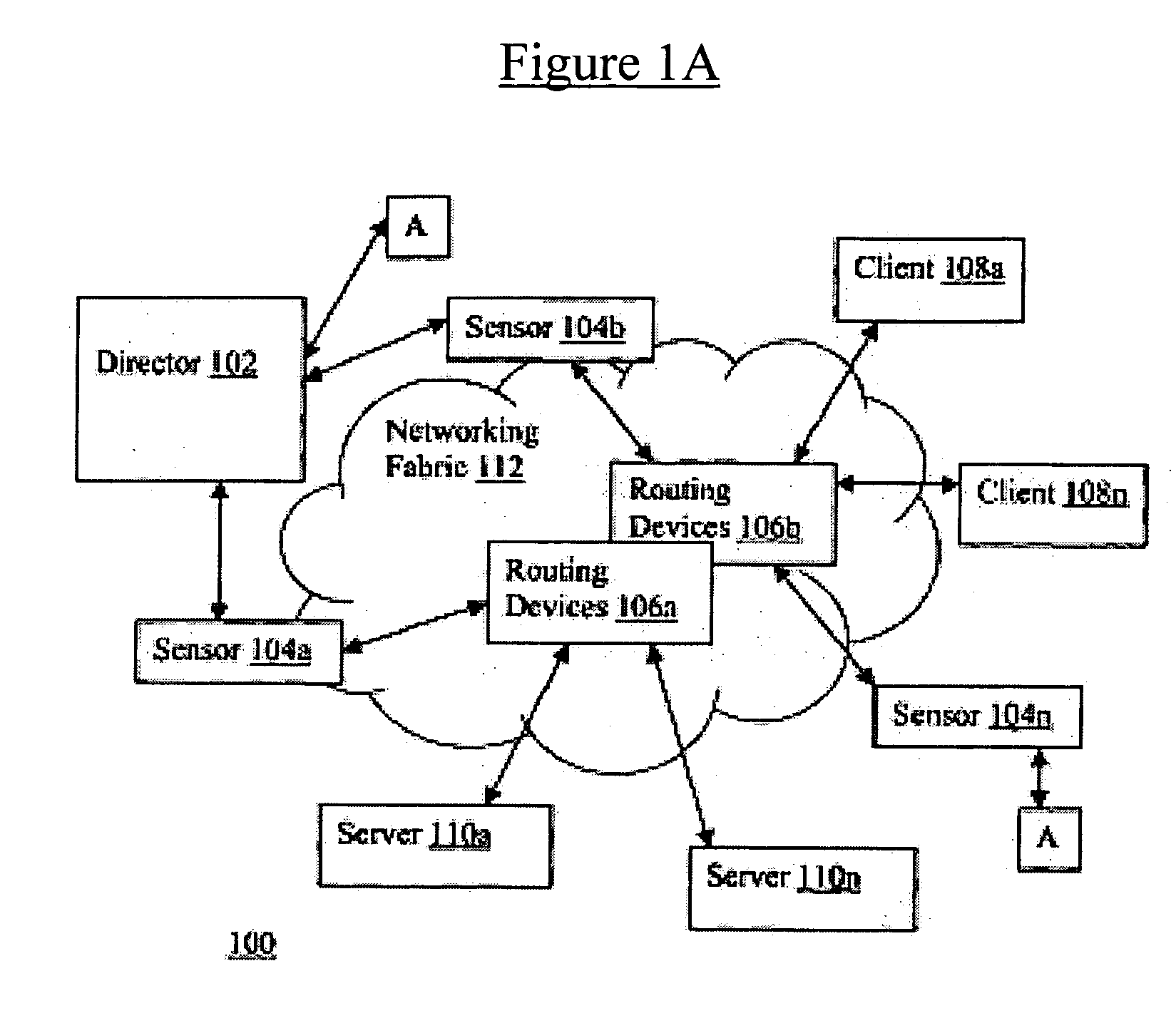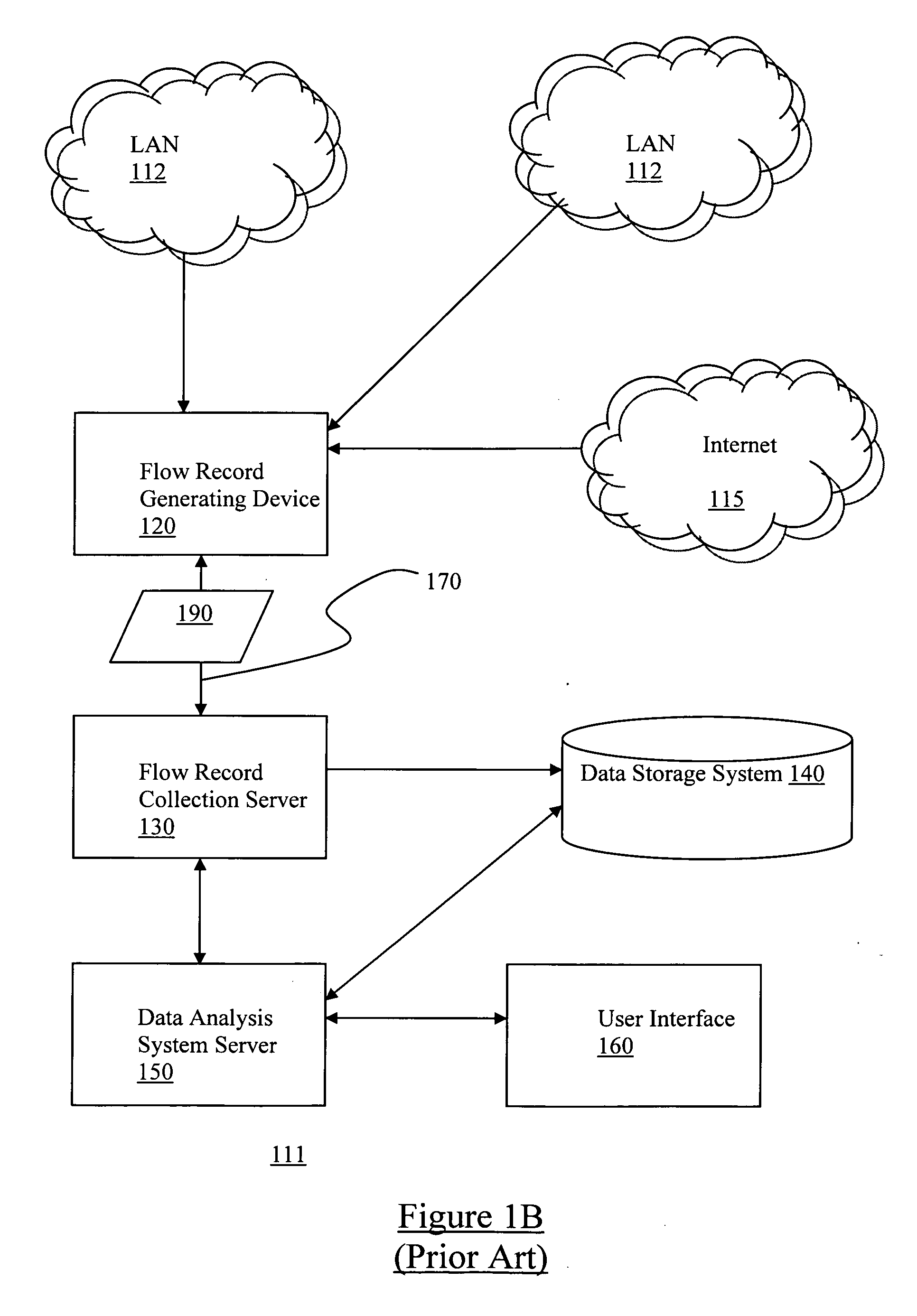Method for configuring ACLS on network device based on flow information
a network device and flow information technology, applied in data switching networks, instruments, frequency-division multiplexes, etc., can solve the problems of difficult management, arbitrary and unpredictable selection of ip addresses to place on acls, and laborious establishment of acls
- Summary
- Abstract
- Description
- Claims
- Application Information
AI Technical Summary
Benefits of technology
Problems solved by technology
Method used
Image
Examples
Embodiment Construction
[0028]A network 100 in accordance with embodiments of the present invention is depicted in FIG. 1A, wherein a block diagram illustrating a network view of the present invention, in accordance with one embodiment, is shown. As illustrated, client devices 108a-108n are coupled to servers 110a-110n through networking fabric 112, which includes a number of routing devices 106a-106n coupled to each other forming a plurality of network links. Client devices 108a-108n, via routing devices 106a-106n, or more specifically, over the network links formed by routing devices 106a-106n, selectively access servers 110a-110n for services. Unfortunately, as those skilled in the art would appreciate, the same network links that make servers 110a-110n readily accessible to client devices 108a-108n also render them vulnerable to abuse or misuse by one or more of client devices 108a-108n. For example, one or more client devices 108a-108n may individually or in combination launch an attack, such as a den...
PUM
 Login to View More
Login to View More Abstract
Description
Claims
Application Information
 Login to View More
Login to View More - R&D
- Intellectual Property
- Life Sciences
- Materials
- Tech Scout
- Unparalleled Data Quality
- Higher Quality Content
- 60% Fewer Hallucinations
Browse by: Latest US Patents, China's latest patents, Technical Efficacy Thesaurus, Application Domain, Technology Topic, Popular Technical Reports.
© 2025 PatSnap. All rights reserved.Legal|Privacy policy|Modern Slavery Act Transparency Statement|Sitemap|About US| Contact US: help@patsnap.com



